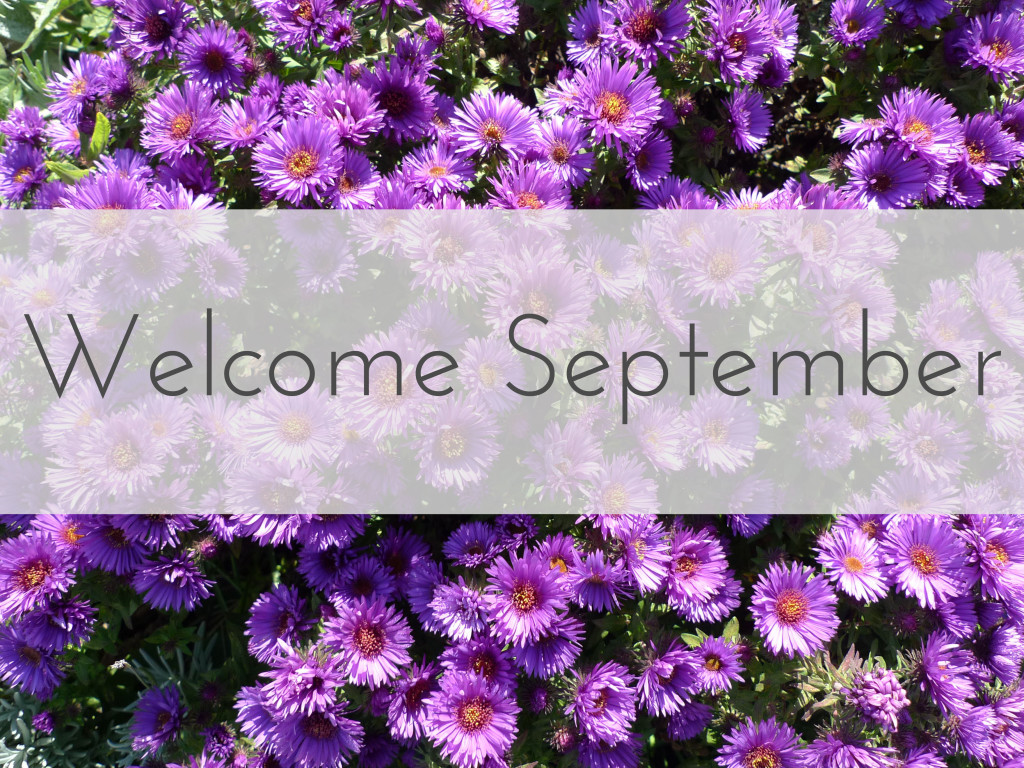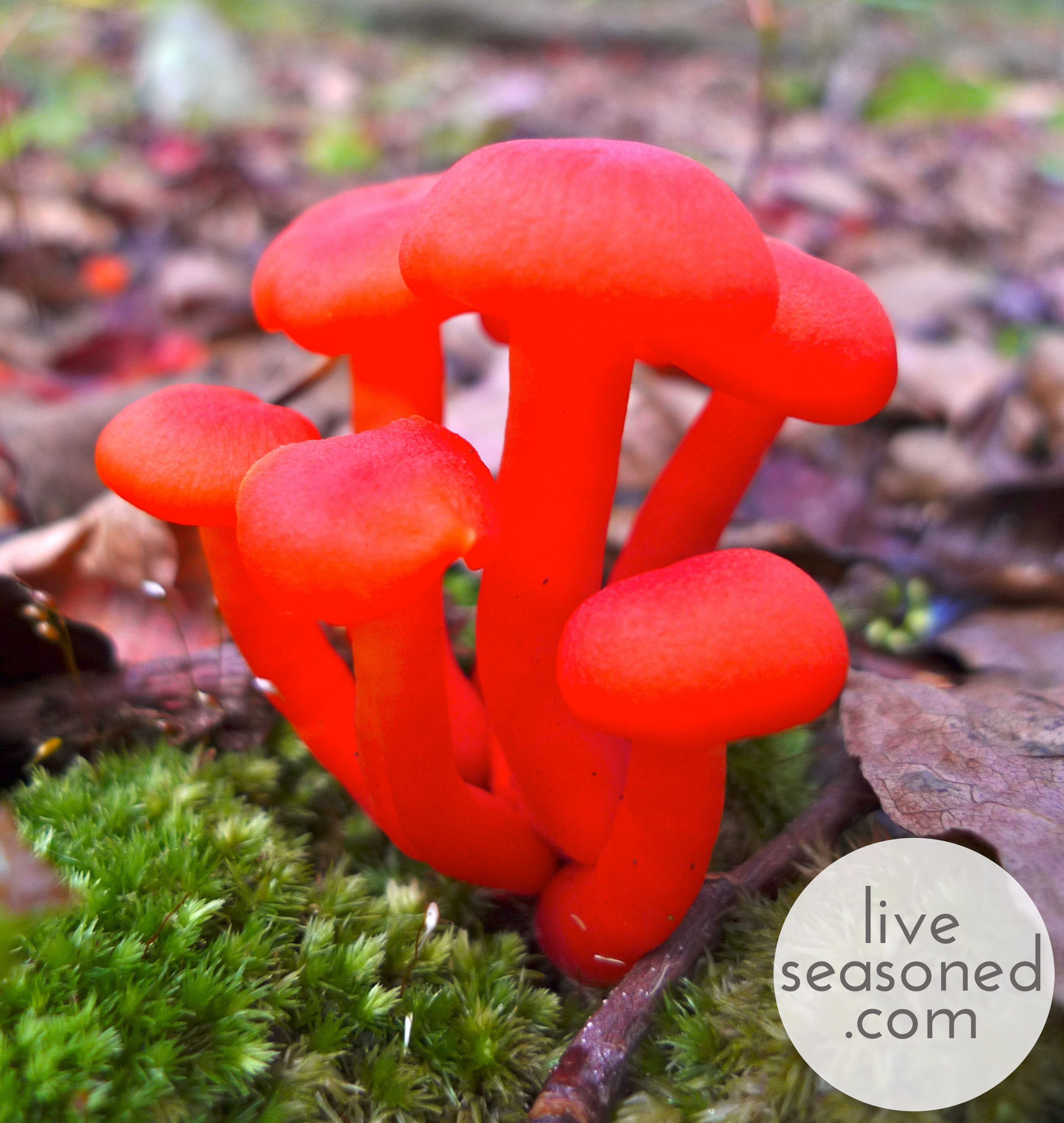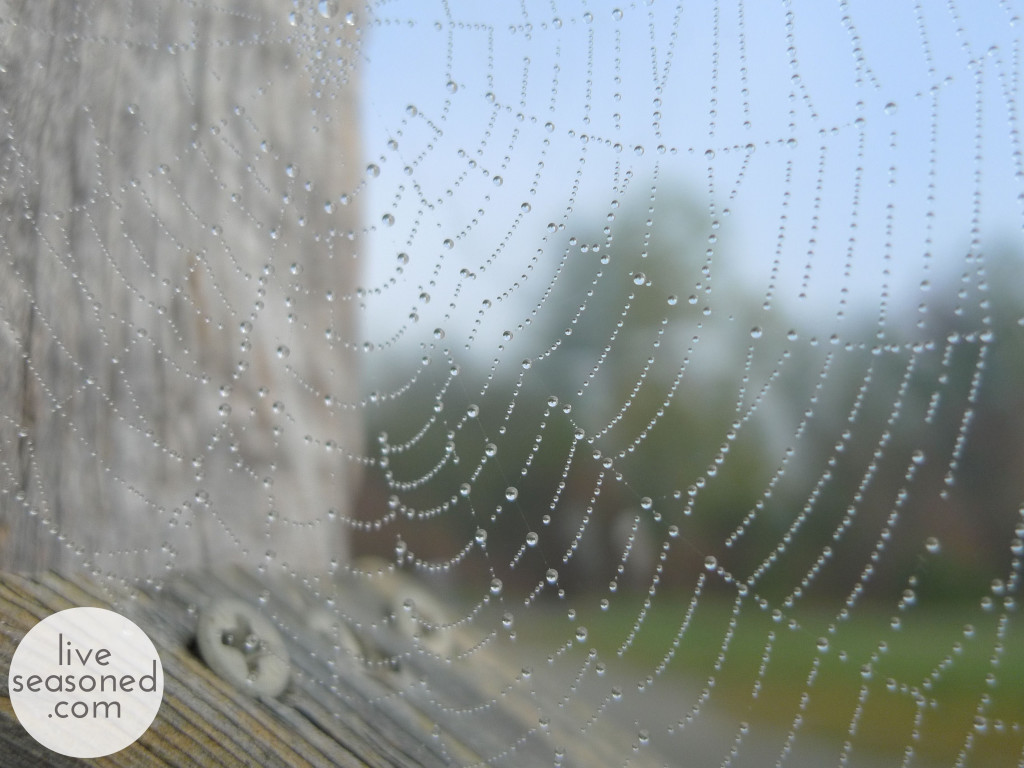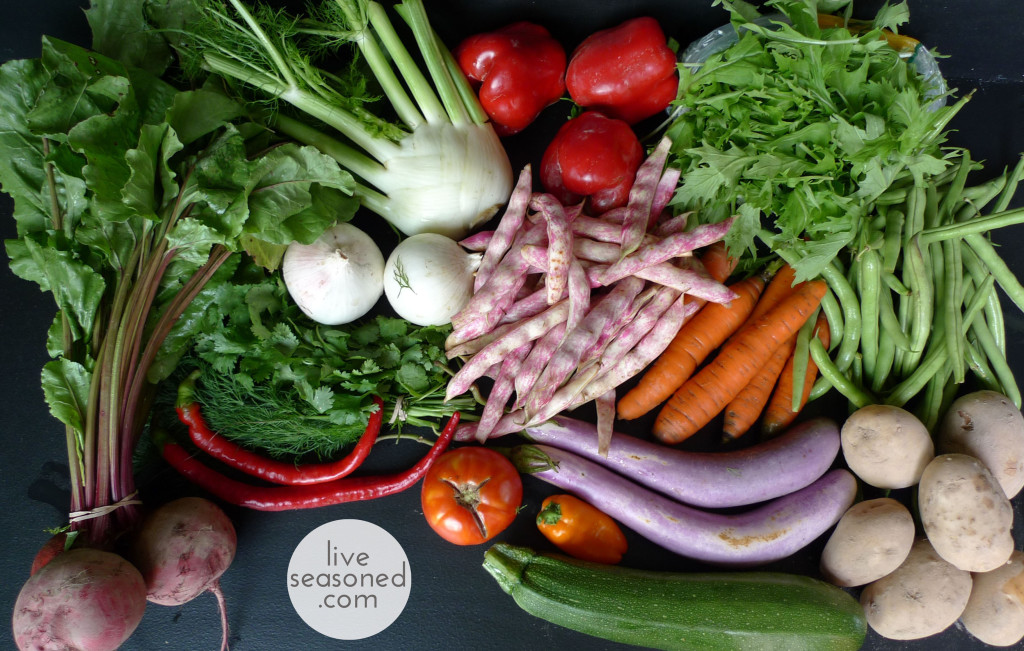On the first Wednesday of each month we like to pause and take a look at what’s going on in the world around us, with a particular focus on animal activity, celestial events, and our farmers’ fields.
With school starting, September always feels like the actual start of the new year. Of course I want to start by restocking my office supplies when I see the fresh school supplies in the stores, don’t you? Yet while I’m looking at the zillions of new pens it’s also the moment I start to mourn the end of summer. It’s good to make a little list of everything to look forward to, like the start of sweater season, cozy evenings inside, afternoons baking apple treats! This month’s Seasoned View provided another nice reminder to perk up – did you see how green those photos were? Yet another reminder that while the nights are getting cool, the days are still plenty warm.
When I was living on the East Coast, September was always such a fun time to explore the woods. As you know, Sarah and I are year-round hikers, but after a dry hot summer, we could usually count on more rain to arrive with the cooler days in September. With that rain, the woods came alive as all sorts of fungus pushed up through the leaf litter. It was always such a spectacle with colors that were almost too vivid for my camera to handle! {Sarah here: Last week while playing frisbee golf in the woods, I was constantly admiring the various mushrooms. I started to annoy my bf because I kept making him ‘come look!’ at all the different types, every two minutes} It’s also a time rich with animal activity as birds are migrating overhead and mammals are scurrying through the woods looking to collect food and bulk up for the winter months. Now that we’re in the mountains, I’m excited to see how September’s weather changes our hiking trails.
Earth and Sky
This section is going to be all about keeping your head up, looking and listening for September’s migrating birds and celestial activity.
September falls in the middle of peak activity for migratory birds. So many species are on the move – from the shore birds that started their journey towards the end of summer to a variety of warblers, orioles, hawks, and even owls that are moving throughout North America. Rather than talk about a few specific species this month, I thought it would be a great time to talk about what we can do to help the migrating species, mention some fun facts, and provide a few resources if you would like to learn more and follow along with the migrations in your area.
There are a number of things that you can do throughout the migration seasons, and even throughout the year, to help ensure a successful trip for the birds in your area.
- Keep your feeders stocked. Provide quality, energy dense feed to fuel their journey (add more black-oil sunflower seeds to your mix, put suet feeders out). This includes your (dye-free) hummingbird feeders too!
- Provide clean water. Quench their thirst, and make it attractive to them by keeping the water moving either with a bubbler or pump.
- Keep pets indoors during this time. If the birds have landed in your yard for a meal and a rest, you don’t want your pets to disturb or kill them.
- Provide native habitat. Depending upon the current state of your yard, this may require more work and time than the previous points, but it’s one of the best things you can do to attract birds (and bonus – your native yard will likely require less work and water than one planted with non-native species!). Native plants provide both food and shelter for the birds.
- Reduce or eliminate pesticide and other chemical applications. It’s a problem for the entire ecosystem, including birds, our waterways, and us. ‘Nuff said?
- Turn off your lights at night! Many migratory birds fly at night, using the stars as their guide. By eliminating light pollution you’re helping them navigate.
- Reduce window reflections. Millions (500 million on average) of migratory birds die every year by flying into windows. This is especially a problem in cities with tall glass-covered buildings. An article this past spring discussed work that’s being done to try to remedy this by using glass that deters the birds. If you find that the windows in your house are targeted by birds, closing the curtains or putting up large decals (at least for migration season) on those windows may help.
If you’re interested in following along with this season’s migrations, the Cornel Lab of Ornithology produces a bird migration forecast. It discusses what species you should expect to see moving in different regions of the United States. After reading one forecast, it becomes clear that migrations are dependent upon current weather conditions. Some of the best times to see large populations of migrating birds is directly after a cold front passes, leaving clear cool and rain-free days and nights in their wake. A more detailed discussion of the interplay between weather and migrations as well as a discussion of day versus night migrants can be found here. As I mentioned above, many species migrate at night, landing around dawn to feed and rest for the day. If you really want to increase your chances of seeing a wide variety of migrating birds, get out early (when the dew’s still heavy on the cobwebs) and look for the closest native habitat with water.
Still holding your eyes to the sky, you’ll see September’s full Harvest Moon on the 9th. The first official day of Autumn occurs on September 23rd (Bruce Springsteen’s birthday!) when the sun is directly over the equator and there are nearly equal amounts of day and night throughout the world. Then it’s bye bye sun for us in the Northern Hemisphere. This month’s new moon occurs on the 24th, making it a great evening to get out and look for faint objects in the night’s sky. If you’re looking to find a planet this month, you may have some luck finding Saturn. On September 28th around midnight EDT, the moon will pass just north of Saturn in the constellation Libra. Let us know if you see it!
Fields and Festivals
Have potatoes popped up at your market yet? If not, they should soon! This is the time of year when those crops that require the full summer growing season are finally ready for harvest. You can include apples, pumpkin, and other winter squash on that list too. It’s also a time when the mid-day temperatures start to cool off enough to allow farmer to grow a wider variety of greens again. That’s in addition to the watermelon, summer squash, peppers, and cucumbers that you’ve been enjoying for a few weeks now!
It was a couple Septembers ago when Sarah and I volunteered at our farmshare’s sweet potato harvest. If you have the opportunity, I think it’s always worth visiting a farm to see how your food is grown and harvested. This farm uses draft horses for anything that would typically require a gasoline-powered tractor. On this day, the horses pulled a plow that would overturn the dirt, unearthing the sweet potatoes in the process. It was our job to follow the plow and separate the potatoes into “firsts”, those without any blemishes, and “seconds”, those that were cut by the plow, nibbled on by mice, or damaged in some other way. Once separated, the potatoes would have to sit out to cure for a couple of days before going into storage. Curing dries their skin, minimizing the chance of the potatoes getting moldy while being stored. What a relaxing, yet invigorating morning that ended with fresh-baked sweet potatoes for lunch!
Since the fair and festival season is dying down (although our favorite Bloomsburg Fair is still to come!), we thought it would be fun to highlight a few of the nature-related holidays that are on the calendar this month.
- September 16, International Day for Preservation of the Ozone (it still needs our love!)
- September 18, World Water Monitoring Day
- September 19-21, Clean Up the World Weekend
- September 21, Zero Emissions Day (we dare you!)
- September 22, World Car-free Day (double-dog dare you)
- September 26, World Environmental Health Day
- September 28, World Rivers Day
So much going on, and plenty of days on that list reminding us to take a moment and appreciate this great planet. We hope you’ll do something that makes it a better place this month. Maybe even something that takes some thought and time, like biking to work, planting something native for the migrating birds, or taking those shorter showers. And of course we hope you celebrate the season’s bounty too – with jugs of apple cider, piles of potatoes, and bushels of beans!








